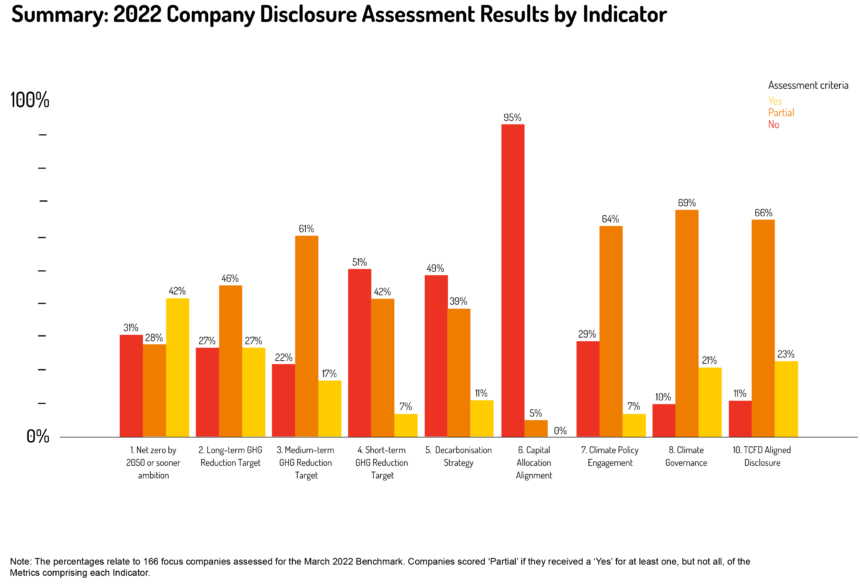After recognising the importance of mitigating our environmental impact, a lot of the world’s biggest companies have committed to net-zero emissions in their respective industries. Net-zero emissions means balancing the total amount of greenhouse gases being emitted by the equivalent amount being removed from the atmosphere.
This write-up discusses some of the major organisations leading the way towards net zero carbon emissions for a greener world. However, before we discuss these companies, let’s first understand the different categories of greenhouse gas emissions.
Categories of Emissions
Here is how the Greenhouse Gas Protocol categorises carbon emissions:
- Scope 1 emissions: These are direct greenhouse (GHG) emissions from company-owned facilities, resources, and functions. They include fuel combustion from companies’ boilers, fleets of vehicles, and furnaces.
- Scope 2 emissions: This refers to indirect GHG emissions linked to a company’s purchased utilities, including electricity, heating, steam, and cooling.
- Scope 3 emissions: These are indirect emissions from the downstream and upstream functions of a company. In this category, the company in question does not directly own the emissions. They stem from the purchase of products from its suppliers and when customers use that particular company’s products.
Companies Leading the Way Towards a Sustainable and Environmental Sustainable World
Organisations have come up with their own low-carbon commitments to minimise their carbon footprints to avoid the negative impacts of climate change.
Here are the companies that are committed to minimising their carbon footprint in their respective industries.
1. Coca-Cola HBC
In 2021, Coca-Cola HBC, a manufacturer and distributor of Coca-Cola brands, announced its commitment to net-zero emissions by 2040. The commitment, spanning across its entire value chain, would address 90% of Coca-Cola’s Scope 3 emissions (upstream emissions from its suppliers).
This move is in line with the company’s philosophy to support the socio-economic development of its communities and make a positive impact on the environment, all of which are integral to the company’s future growth.
To achieve its net-zero goals, Coca-Cola HBC made a plan to start relying 100% on renewable electricity and low-carbon energy sources. They would also cut agricultural ingredient emissions, implement a “green fleet” program, and embrace circular economy measures (CE).
A circular economy is an approach aimed at promoting the responsible and cyclical use of resources. It revolves around the following three principles:
- Eliminating waste and pollution
- Circulating products and materials at their highest value
- Regenerating nature
2. Lottoland
Lottoland UK prides itself on being the first gambling operator to sign the Climate Pledge. This leading lotto operator was assisted by Turnley Engineering, a global climate reduction consultancy helping organisations achieve net zero emissions, to conduct comprehensive assessments to measure and improve Lottoland’s biodiversity footprint.
After fully understanding the Carbon Cost attached to water use, energy use, and business travel, Lottoland started making tangible reductions to its carbon footprint, making it a greener and more ethical company by extension. The assessment and reduction was completed in accordance with ISO 14064 father, cementing their commitment towards achieving net zero carbon emissions by 2040.
The Climate Pledge signed by Lottoland commits to the following principal areas of action;
- Regular reporting: Regularly measuring and reporting on greenhouse gas (GHG) emissions.
- Carbon elimination: Implementing decarbonisation strategies in line with the Paris Agreement.
- Credible offset: Neutralising the remaining emissions to achieve net-zero annual carbon emissions by 2040.
3. Microsoft
Microsoft has made significant strides in the journey towards carbon neutrality, most of which are directed towards the company’s direct emissions and the entire supply and value chain.
In 2012, Microsoft achieved carbonate zero, and in 2020, it pledged to become carbon-negative by 2030. To achieve this, Microsoft invested in more than 30 billion kilowatt-hours (kWh) of green power and cut its emissions by 20 million metric tons of carbon dioxide.
Microsoft also launched its Climate Innovation Fund in 2020, committing to invest $1 billion into new technologies and support people working to address Climate change around the world. For instance, the Microsoft Innovation Fund supports LanzaJet’s sustainable fuel plant to help decarbonize its data centres and aviation industry.
4. Sasol
In 2021, Sasol also released a report detailing how it would transition to a net-zero business model by 2050. The South African fuel and energies company expanded its 2030 scope 1-2 emissions reduction initiative from 10% to 30%.
Sasol also started another initiative aimed at reducing scope 3 emissions from its energy business. According to Sasol, the Scope 3 reduction target aimed for a 20% reduction by 2030.
This target would be achieved without divestment and offsets. Instead, the company laid a plan to directly decarbonize its existing assets. The report stated that Sasol would;
- Invest in renewable energy
- Include more low-carbon alternatives like green hydrogen and sustainable aviation
- Increase energy and process efficiencies
- Shift to natural gas as a transition feedstock
Conclusion
A net-zero target requires strategic moves because every industry has unique regulations around emissions. As such, a lot of organisations have come out to help businesses assess their carbon footprint and draft plans to help them meet their net-zero emissions goals.


